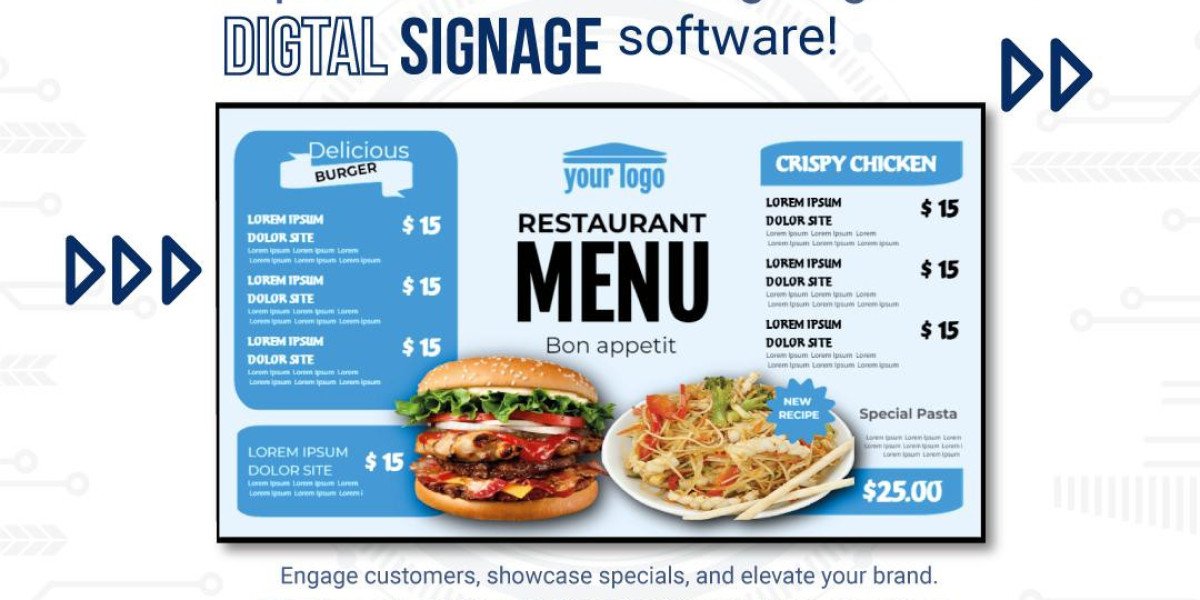Updating digital menu boards for restaurants doesn’t have to be a daunting task. Whether you're adding new menu items, adjusting pricing, or showcasing special offers, a streamlined process ensures that your updates are quick, accurate, and visually appealing. With the right digital signage software, you can make these changes effortlessly and keep your menu fresh and engaging for customers.
Here’s how you can easily update your digital menu board without hassle:
1. Choose User-Friendly Digital Signage Software
The first step to smooth updates is selecting digital signage software that's intuitive and user-friendly. Look for platforms that offer drag-and-drop functionality, templates, and a simple interface that allows you to make changes without needing advanced design or technical skills.
When choosing software, consider these features:
- Cloud-Based Management: Being able to access and update your menu from anywhere is crucial. Cloud-based systems allow real-time updates and ensure consistency across multiple locations.
- Pre-designed Templates: Pre-made templates simplify the design process and help maintain a professional look.
- Integration with Your POS: If your software integrates with your POS (point of sale) system, updating prices and availability in real-time is automatic and seamless.
2. Organize Your Menu in Advance
Before making any updates, take the time to organize your menu. This involves categorizing items, determining seasonal changes, and planning out promotions or daily specials. By having a structured plan, you can avoid confusion and ensure that your digital menu board is always up-to-date.
Regularly assess what’s performing well and what’s not. If certain items aren’t selling, consider replacing them with something more appealing. Streamlining your offerings makes updates quicker and helps avoid overwhelming customers with too many choices.
3. Utilize Templates for Fast Edits
Most digital signage software comes with customizable templates. Templates are incredibly useful for keeping your restaurant’s branding consistent while allowing quick adjustments. For instance, if you're launching a new seasonal menu, you can use a template to simply swap out images and text without starting from scratch.
This feature is especially helpful when running limited-time promotions or daily specials, as you can quickly make changes without disrupting the overall design.
4. Use Automation for Scheduling Updates
Automation tools in digital signage software allow you to schedule updates in advance. This is perfect for rolling out new promotions, lunch specials, or holiday menus. By scheduling changes to happen automatically, you can focus on running your restaurant without worrying about last-minute updates.
For instance, if you plan to run a happy hour special, set the menu to update at the appropriate time each day. This ensures that your digital menu board reflects the correct pricing and promotions, maximizing customer engagement.
5. Maintain Brand Consistency with Visuals
Whenever you update your digital menu board, it’s essential to maintain your restaurant’s branding. Consistency in font styles, colors, and images ensures that your menu looks professional and aligned with your brand identity.
Use digital signage software that allows you to store and reuse branded elements like logos, colors, and custom fonts. This makes updates seamless, as you can easily apply these elements without needing to recreate them.
6. Test Before Publishing
Once you've made updates, it's always a good idea to preview your digital menu board before publishing it live. Most digital signage software offers a preview function where you can see how your updates will appear to customers. Ensure that all text is legible, images are clear, and no important information is cut off.
Testing helps avoid errors like incorrect pricing, typos, or unappealing layouts that could impact customer experience.
Conclusion
Updating digital menu boards for restaurants can be a smooth and efficient process when you use the right digital signage software and follow a structured approach. By organizing your menu, using templates, scheduling updates, and maintaining consistency, you can ensure that your restaurant’s digital menu is always current, visually appealing, and reflective of your brand. Keep your updates easy and enjoy the benefits of a modern, dynamic menu board that enhances your customer experience!


